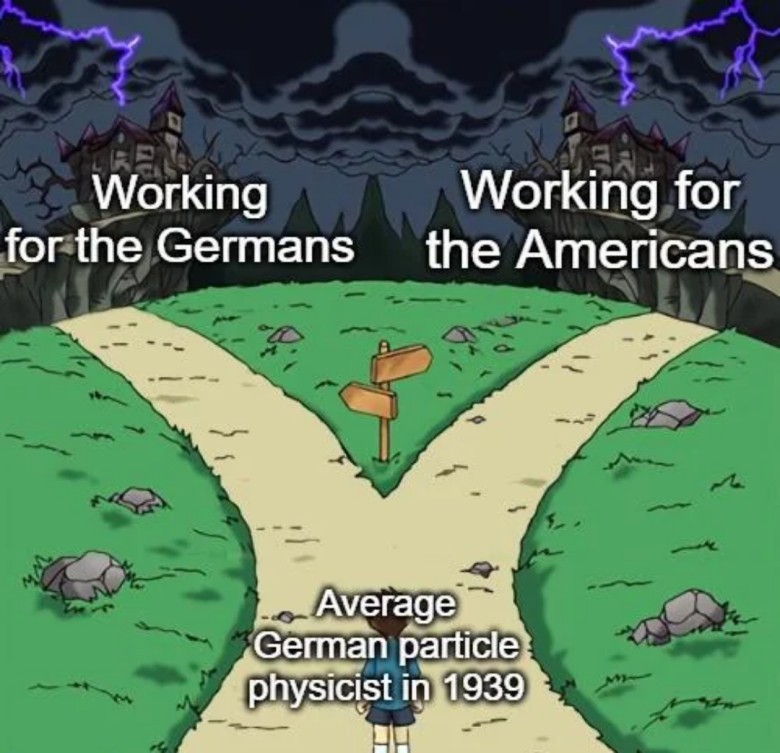views

his meme utilizes the popular "fork in the road" template, featuring a character standing at a crossroads, symbolizing a difficult decision. In this specific iteration, the character is labeled "Average German particle physicist in 1939." The two paths diverge towards different outcomes: one labeled "Working for the Germans" leading to a dark, menacing castle under stormy skies, and the other labeled "Working for the Americans" leading to a similarly menacing, but distinct, castle under stormy skies.
The humor, often dark and historically pointed, lies in the implied context of World War II and the ethical, political, and practical dilemmas faced by German scientists, particularly those in fields like physics. In 1939, as Nazi Germany escalated its aggression, many scientists, especially Jewish scientists or those who opposed the regime, fled the country. Others remained and contributed, willingly or unwillingly, to the German war effort, including potential atomic research.
The "Working for the Americans" path subtly refers to the exodus of brilliant European, particularly German, scientists who immigrated to the United States and subsequently played crucial roles in Allied efforts, most notably in the Manhattan Project, which developed the atomic bomb. Figures like Albert Einstein (though he had already left Germany before 1939) and many others are emblematic of this "brain drain" from Europe to the US.
The meme's effectiveness comes from:
- Historical Irony: It highlights the stark choices and consequences for individuals caught in major historical conflicts.
- Dark Humor: It approaches a serious historical period with a touch of gallows humor.
- Relatability of Dilemma: While specific to 1939, the feeling of being at a professional and ethical crossroads is universally relatable.
- Visual Metaphor: The "fork in the road" visually represents a critical life choice.
It serves as a commentary on the complex interplay of science, politics, and morality during wartime.




















Comments
0 comment